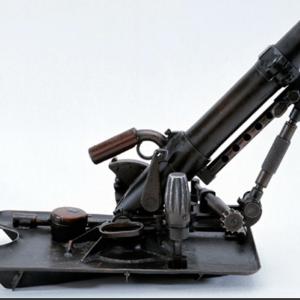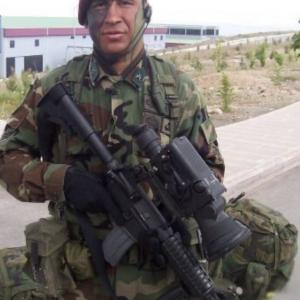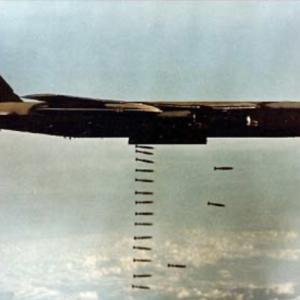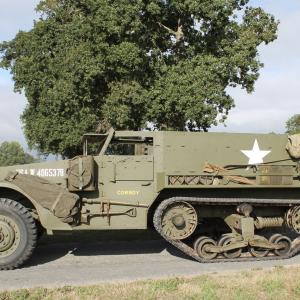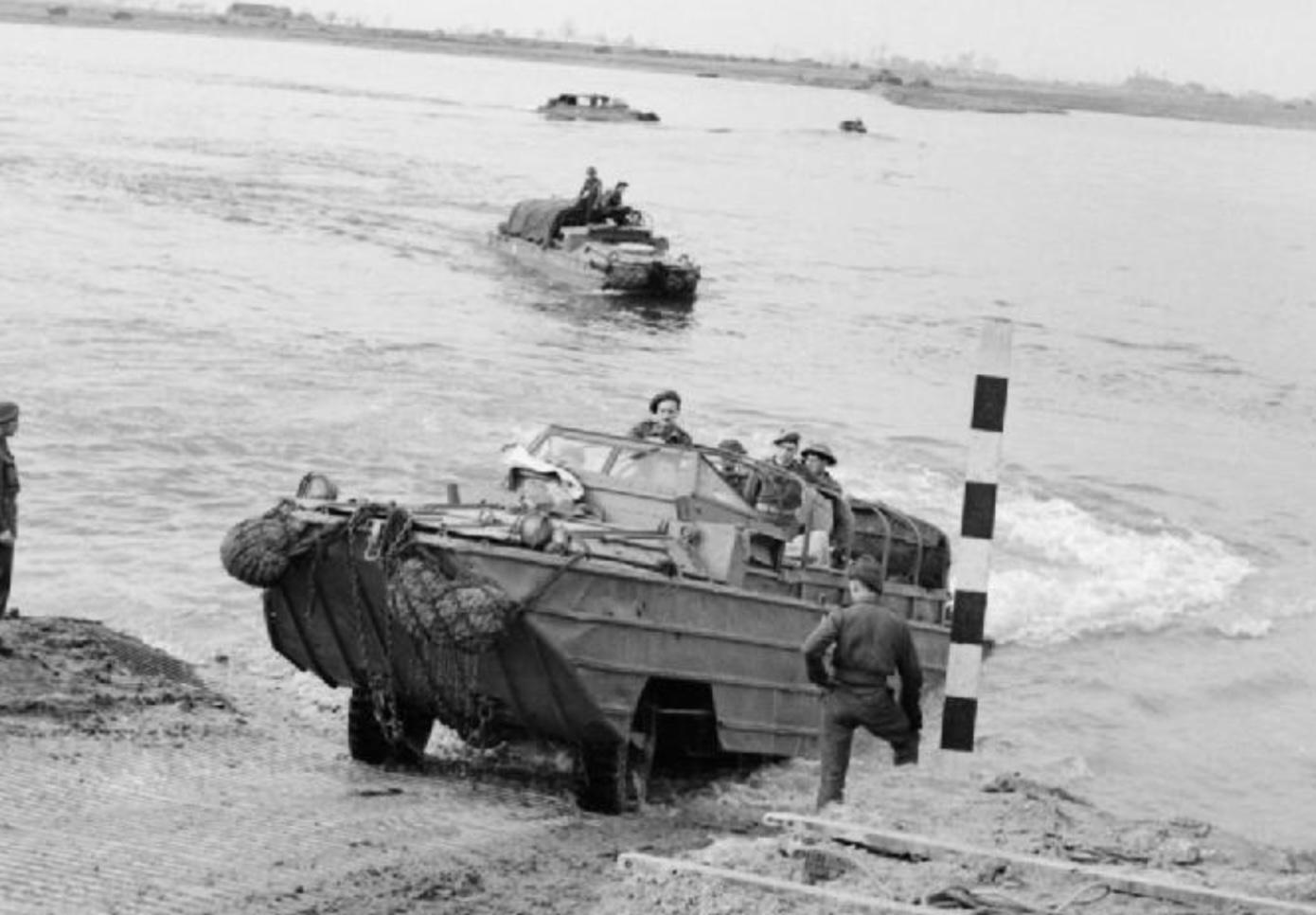
DUKW “Duck”
The DUKW, often referred to as the “Duck,” was an innovative amphibious vehicle developed by the United States during World War II to address the logistical needs of amphibious operations. Its peculiar name was derived from General Motors’ model code: “D” indicated the year of design, 1942; “U” stood for utility; “K” signified all-wheel drive; and “W” meant dual rear axles. Far from a novelty, the DUKW became one of the most important support vehicles in the Allied arsenal. The vehicle was designed through a collaboration between General Motors and the naval architecture firm Sparkman & Stephens. The key figures in the design process were Rod Stephens Jr., a yacht designer, along with engineer Frank W. Speir and naturalist-turned-inventor Dennis Puleston. The team combined expertise in naval design, engineering, and field utility to produce a machine that was both seaworthy and capable on land.
The DUKW was built on the chassis of the GMC CCKW, the standard 2.5-ton, 6x6 military truck used throughout the war. It featured a watertight hull and additional equipment that allowed it to operate in both marine and land environments. The vehicle retained much of the mechanical structure of the standard CCKW, including the GMC 270 cubic inch inline six-cylinder engine, but added a propeller and rudder system for water navigation. The designers cleverly integrated these new components without compromising the truck’s original performance on land. This dual-use capability was a significant achievement, allowing a seamless transition from water to shore in active combat zones.
An especially innovative feature of the DUKW was its central tire inflation system, one of the first of its kind. This allowed the driver to change the tire pressure on the fly, improving traction on sand, mud, and uneven terrain—surfaces commonly encountered in beachhead landings. Another key element was the addition of a bilge pump system, essential for managing leaks or seawater that might enter the hull during rough conditions. Although the hull was relatively thin steel and not heavily armored, the DUKW was surprisingly durable in various operational theaters, including the Pacific islands, the European coastline, and river crossings in the European interior. Its ability to drive from ship decks into the sea, travel ashore, and continue inland without unloading its cargo was a dramatic enhancement to amphibious logistics.
The primary role of the DUKW was to carry cargo, equipment, and troops from ships offshore to areas inland. Each vehicle could transport 2,500 pounds of cargo or up to 25 fully equipped soldiers. The open cargo area could be quickly loaded or unloaded, which was crucial during fast-paced military operations where establishing a supply line was essential. The vehicle was also capable of towing small artillery pieces or trailers once ashore. Its size and maneuverability made it ideal for transporting supplies across shallow waters, narrow beaches, and primitive roads. The Allies first deployed the DUKW in large numbers during the Sicilian campaign in 1943, where it proved invaluable in overcoming the lack of adequate port facilities. From there, it became a staple in nearly every amphibious operation, including the D-Day landings in Normandy and various island assaults in the Pacific.
Throughout the war, the DUKW was praised not only for its versatility but also for the speed at which it enabled logistical operations. It played a vital role during the Normandy invasion by shuttling supplies from ships anchored offshore directly to the advancing troops inland. In some areas, it was the only vehicle that could navigate both the rough surf and the muddy French countryside. The DUKW was also used in the crossing of the Rhine River, where its amphibious ability allowed Allied forces to outmaneuver German defenses. Its performance in these theaters earned it a reputation as one of the most effective support vehicles in the U.S. Army's inventory. In addition to American forces, British and Australian troops also employed the DUKW, and captured models were even studied by German engineers.
Production of the DUKW ran from 1942 to 1945, with a total of 21,147 units built during that time. Most were produced by General Motors’ Yellow Truck & Coach division. After World War II, many DUKWs continued to serve in military and civilian roles. They were used during the Korean War, particularly during the Inchon landings in 1950, and some were still in operation with reserve units into the 1960s. Outside the military, surplus DUKWs found a second life in civilian use. They were employed for disaster relief during floods, used by exploration teams in remote or marshy environments, and later became popular as tourist vehicles in cities like Boston and London. The robust design, simplicity of operation, and ability to traverse water and land kept them in service for decades.
In military use, the DUKW’s service life extended for over 20 years, officially retiring from most active duty in the late 1960s. However, some continued to be used for training or ceremonial purposes into the 1970s. Although newer amphibious vehicles eventually replaced it, none matched the DUKW’s unique combination of affordability, effectiveness, and widespread use. Its impact went beyond its original wartime function; it inspired future generations of amphibious military and civilian transport design. The DUKW represents one of the rare cases where military necessity led to a technological innovation with long-lasting civilian applications. Even today, restored DUKWs continue to operate in heritage and tourism contexts, serving as a reminder of how clever engineering helped shape the outcomes of major military campaigns.

